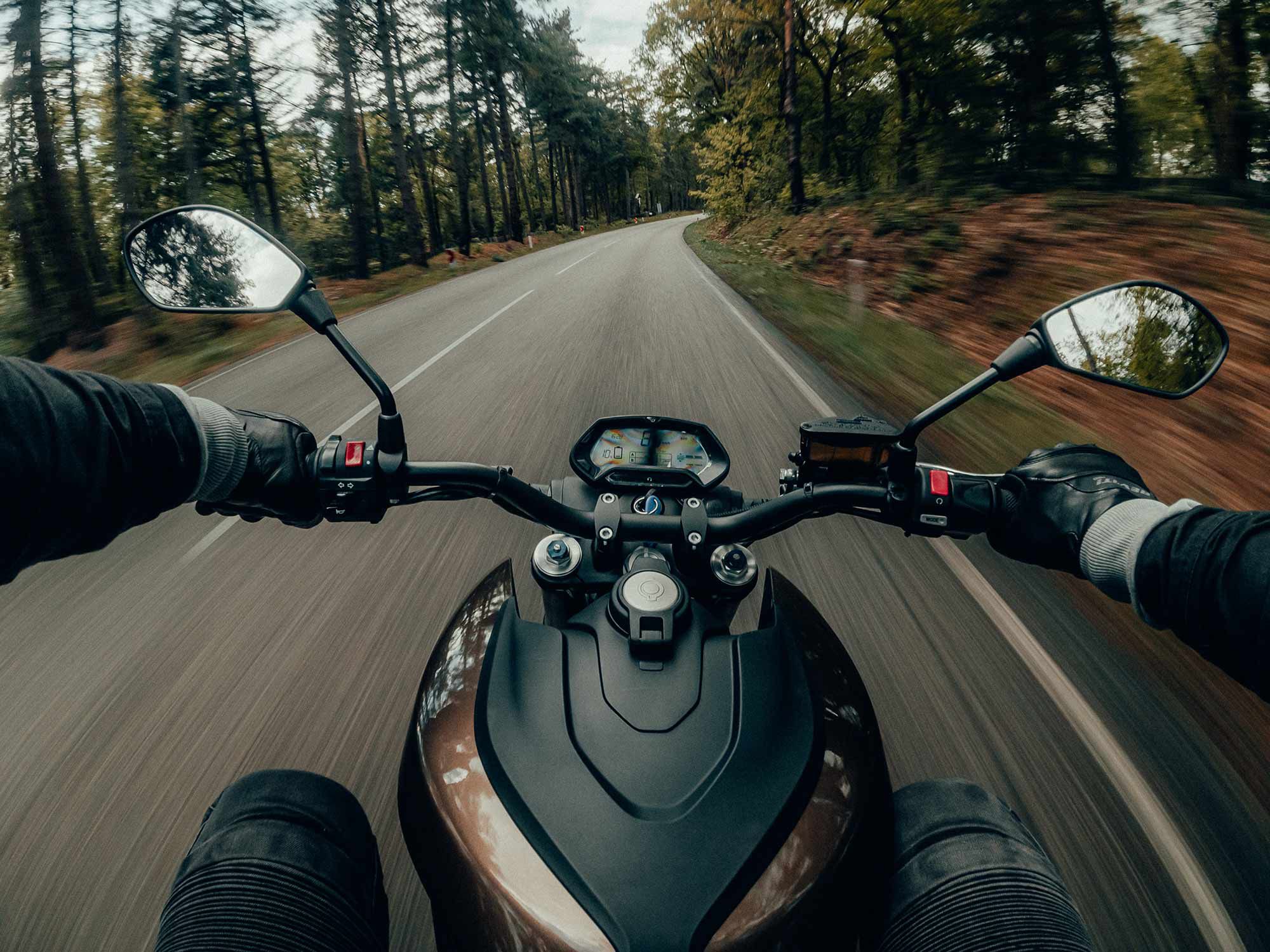
An Ode to Ambition
At midday, the rays of the sun beam strongly overhead, reflecting brightly off of the recently painted white lines. Sandwiched between a bluebird sky above and an expanse of pavement below, I had just signed the papers for my first-ever two-wheeled adventure, all without telling my parents. I was newly 19 years old and euphoric, but I had only ever ridden a motorcycle once before, a 110cc Yamaha TT out on some country dirt in Virginia.
Related: The Motorcycle Brake System: How It Works
That day on the TT didn’t go amazingly, but due to my inherent stubbornness (I blame my grandma), I decided to throw myself in head first anyway. With a bit of advice from a member of the sales team, I was on my own, riding through the parking lot, awkwardly starting and stopping, making rigid turns through the empty spaces and doing my best to convince myself I could do this.
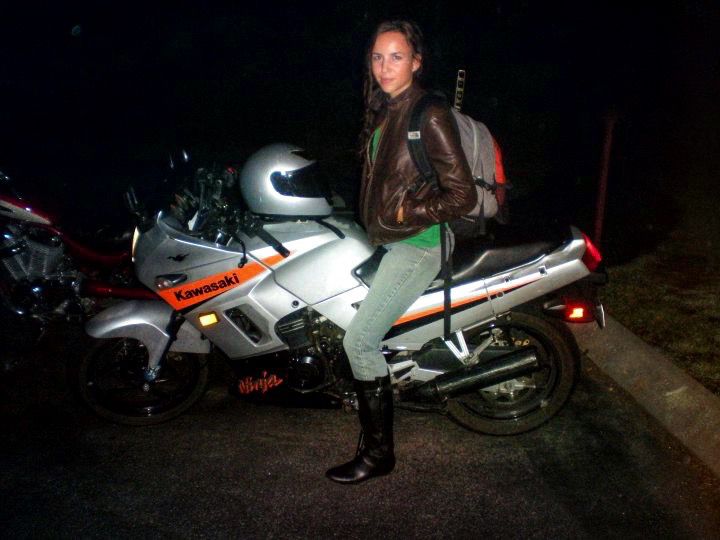
Biking Skills Gone Awry
The same year I had also flung myself into the world of downhill mountain biking. And while generally speaking, technical bicycle riding skills are incredibly helpful for all two-wheeled riding, I mistakenly transferred at least one behavior that didn’t translate. Rather than using the brakes of the machine, I was trying to use my legs to handle the bike when coming to a stop. That first day, I dropped my brand-new Kawasaki Ninja in the parking lot adjacent to the dealership when I rolled up to a stop with the handlebars not totally straight, expecting my legs to keep the weight upright when they didn’t.
Moving slowly is obviously the most difficult, especially if you don’t realize having the wheel turned even the slightest amount sets you up for failure when you’re coming to a stop. I learned the hard way, when the bike fell over to my left side and I panicked, hurriedly picking up my precious new purchase, only to see it fall directly over onto the other side.
Related: Brakes
Now, nearly 20 years later, conjuring up that memory, I can still taste the frustration. Assessing the scratches on the plastic and tank, the scuffed edges of the handlebar grips, and my bruised sense of worth, I pressed on. Resilient? Yes. Stubborn? More so. In hindsight, I should have reassessed my approach to learning to ride in the moment, but I had already committed to my decision and I was still telling myself that I could do this (also YouTube didn’t exist yet).
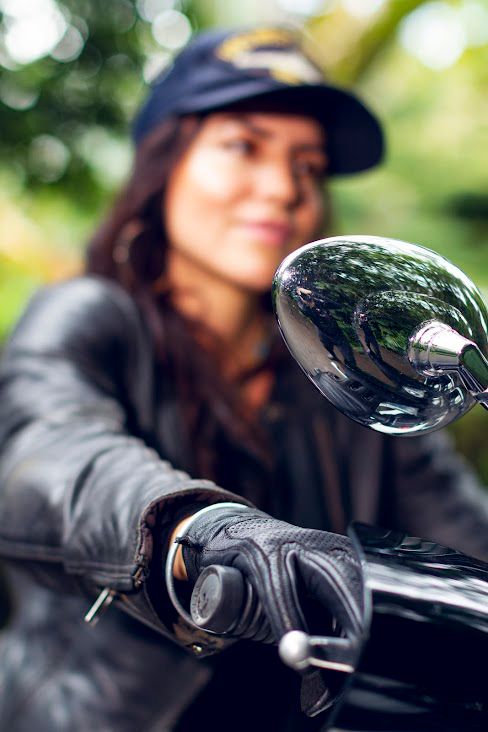
Maintain Equilibrium
I wish that I had known to practice keeping the bike balanced at all times, that using the engine and the brakes to do the work (rather than my quadriceps) was key. Clearly I was very young, inexperienced, and prone to thinking I was invincible, with perhaps a dash too much ambition, because I really would have benefited from a course (which was not required in my state) or an instructor. But true to my standard way of learning—diving in the deep end and trial by fire—I went for it. My riding skills would have progressed much faster had I simply been aware of this one lesson and I would have been so relieved to feel confident and comfortable slowing into every stop.
Related: Motorcycle Trail Braking
Conjure Confidence
So how does one feel most comfortable and stable coming to stop? To begin, you may want to visualize the balance of the bike as momentum is halted. If the front brakes alone are applied, you can notice the fork of your motorcycle compressing in a way that moves force toward the front. This is problematic if the handlebars are turned off-center (even slightly), as the bike then is likely to roll abruptly down in the direction of the turned wheel. This is what happened to me that first day back in that Virginia parking lot, which carried over into the many weeks of uncertainty when I came to a red light or stop sign. I thought that it took leg strength to come to a stable stop, when really all it takes is balance and proper use of your brakes.
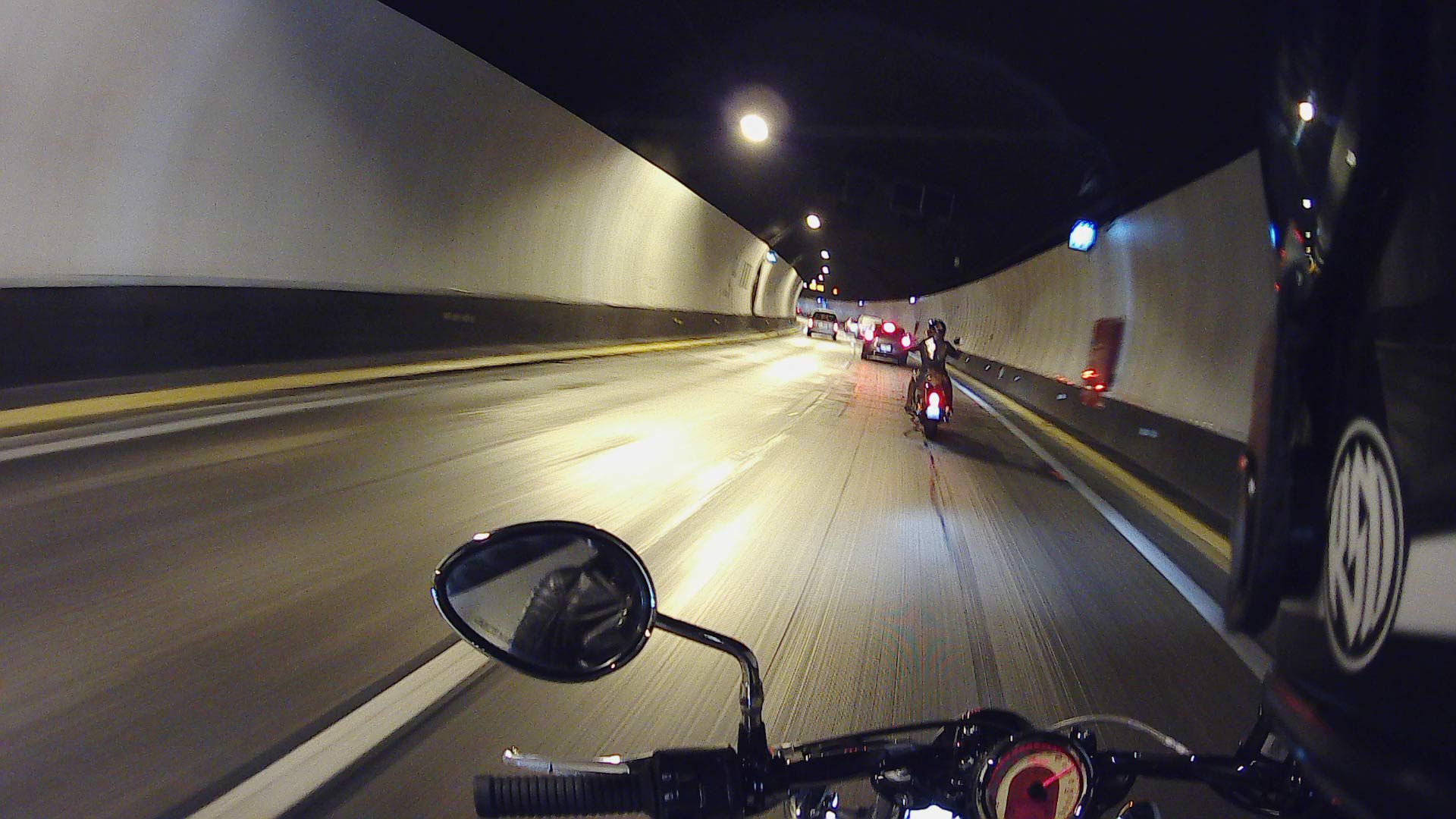
When you use both the front and rear brake to slow and then complete your stop with the rear brake only, keeping your right foot depressed on the rear brake pedal, you get the most balance and stability. You’re still maintaining a stopped, braked position, but poised to move if, say, a driver behind you is coming up fast and doesn’t look like they can stop in time. When viewed in slow motion, you see that the motorcycle maintains its balance most when only the rear brake is used at the end of the stop (your front fork isn’t compressing). So use both to slow but finish with the rear only.
If you have a passenger on board or you’re in windy situations and you find yourself stopped, waiting, it is a good idea to have both feet down (front brake use), to be ready if your passenger shifts around or a gust of wind rocks the boat. So once you come to a stop, put your right foot down and keep your hand on the front brake.
Related: Corner Braking
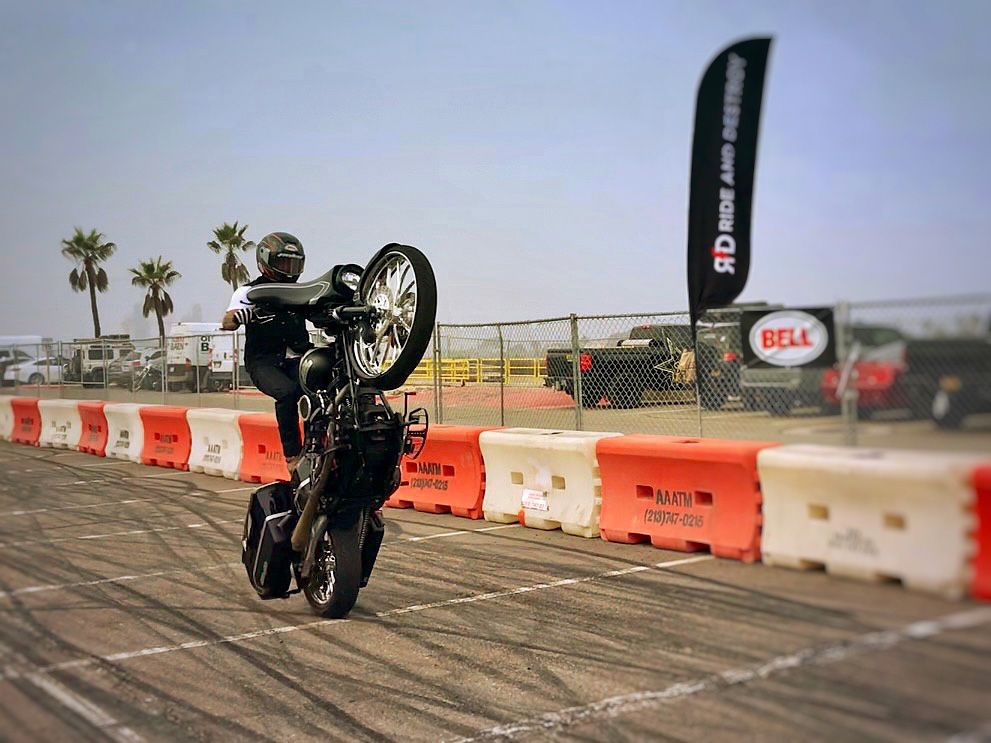
Start Practicing
A practice that really helped me was to intentionally keep my feet up while coming to a near stop and maneuvering the bike slowly, not putting a foot down until the very last possible moment. You may have already practiced this on a bicycle at some point. I started to (and still do) make a game out of it while riding through urban situations, and in doing so, have gained a much better feel for the balance point of my bike while moving slowly. By keeping my feet off the ground for as long as possible, I reversed my initial tendency of depending on my legs to stop the bike and keep it upright. Keep your feet on the pegs, your body upright, and look ahead to where you want to go.
Related: Motorcycle Riding Tips For Beginners: Learning From Mistakes
If you’re still becoming familiar with the best way to use your brakes, consider practicing slow, smooth maneuvers while favoring the rear brake. Find an open space, such as a deserted parking lot, to pretend as if you’re creeping along in traffic, making tight turns, U-turns, figure-8 turns, and stops. You may want to practice avoiding the front brake all together so that you can get a feel for how your rear brake refines your slow speed movements.
It’s always good to intentionally improve your skills on the road, and cross-check what you’ve learned with what other teachers are saying. Sometimes certain learning institutions are set in their ways in teaching certain skills, and then later we find that maybe that wasn’t the best way after all (really in all aspects of education, not only learning to ride a motorcycle). Sometimes basic skills are best for beginners to learn so that those are mastered, such as slow look and roll, before moving on to more “advanced” lessons, such as trail-braking.
Related: Motorcycle Trail Braking
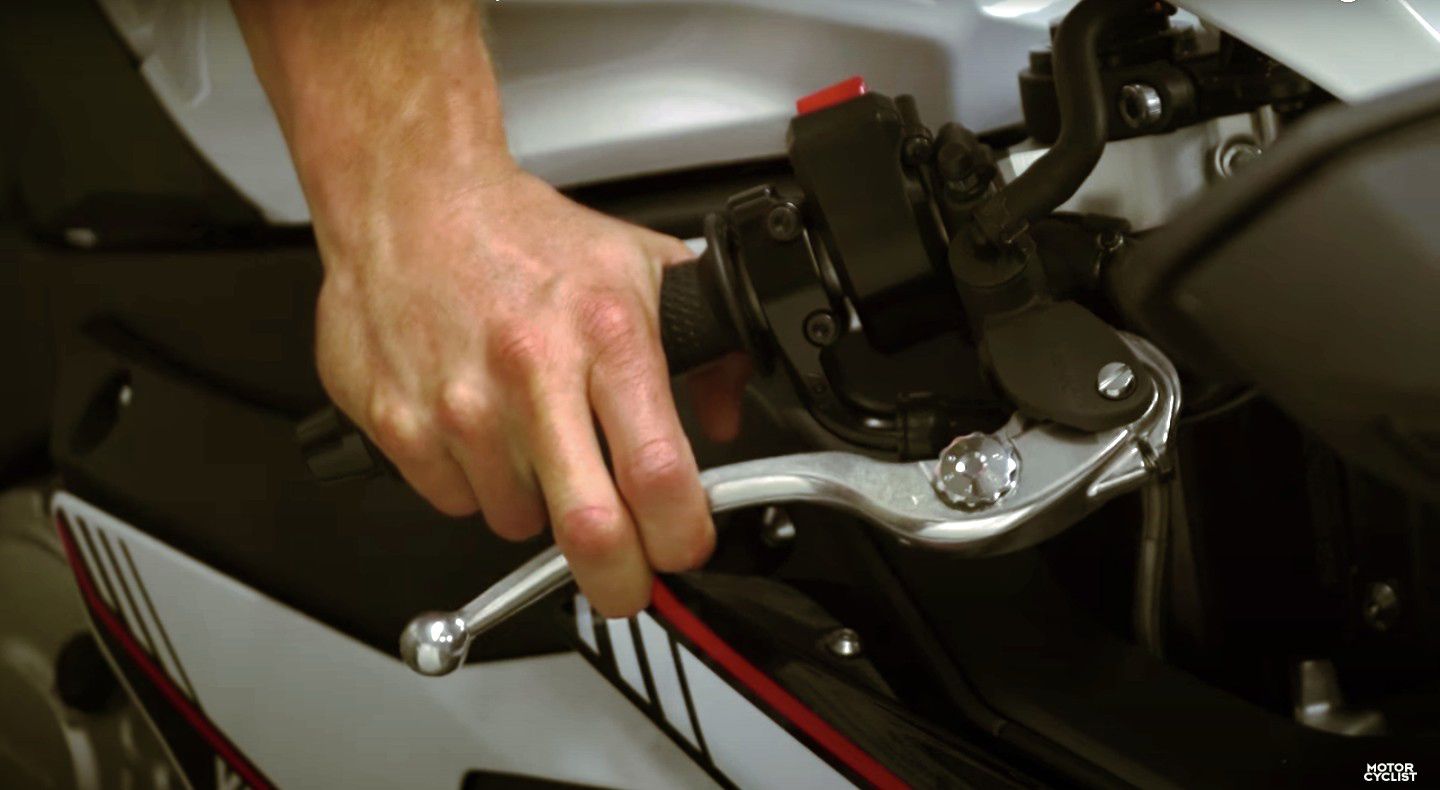
Shades of Brake Dust
There is a lot more nuance to motorcycle braking than one might expect, especially if you’re new to riding. The brake light might seem as though it indicates that it is an all or nothing scenario, but just like so many topics today—braking is on a spectrum. You never want to grab the brake lever suddenly, but rather progressively squeeze it, becoming comfortable with that area where the bike still rolls freely without, even though the brake light has been triggered.
This progressive braking should be practiced as you grow familiar with how weight transfers around from the rear of the bike when accelerating and loading the front suspension when braking. If you transfer this force too quickly by fully grabbing the brake, the suspension does not have time to gradually compress and you therefore lose traction between the tires and the road, resulting in a skid, a slide, and potentially a crash. If you brake progressively, loading the suspension and then compressing the brakes harder, you will be more effective at stopping safely.
Related: 6 Pro Tips for Bike Control
Nowadays, ABS has saved so many of us (myself included) from locking up our wheels when we over-brake in an emergency situation, rescuing us from our reactions which caused us to go all in on the brakes. I recommend anyone to purchase a motorcycle that has ABS, but especially if you are new to riding.
Under Pressure
Get in the habit of gradually squeezing the brake lever so that you’re never grabbing or smashing it down, even when you need to quickly slow down. This can be achieved by riding with two fingers covering the brake lever. Focus on maintaining consistent pressure on the brake lever while rolling open and closing the throttle—even while not actually engaging the brakes but simply keeping pressure on the lever at that moment before the brake pads touch metal. You can then move on to (as you might guess) varying your brake lever pressure while rolling open and closing the throttle.
What Moves Us
So while the dream of riding motorcycles encompasses the “going” and the momentum, it is worthwhile to hone skills of halting this glorious motion in order to truly make the most of it. Rather than avoiding to make slow-speed maneuvers without putting your feet down, such as tight U-turns, go out of your way to practice them on a regular basis. Make a game out of not putting a foot down for as long as you can when you come to a stop. Condition your muscle memory to perform progressive braking so that it begins to happen subconsciously. With time, your motions will become so smooth that you’ll look back on those days of awkward stops and rigid turns with a smile.
Related: Motorcycle Hydraulic Brake System Flush Tips
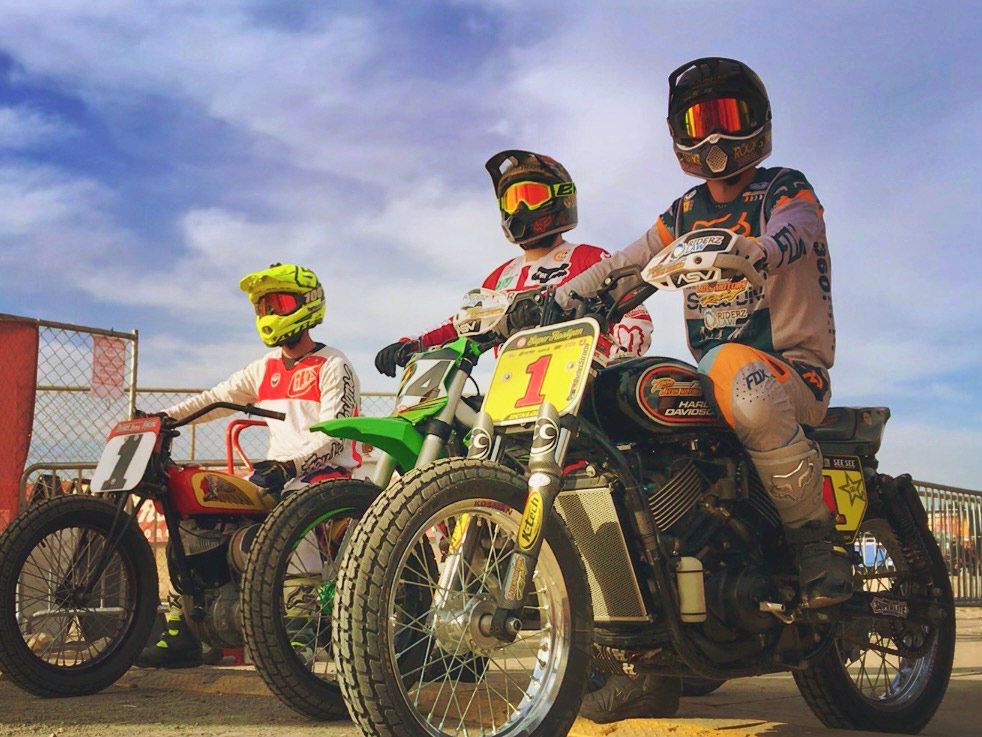
Helpful Videos
Related: Motorcycle Safety Foundation
Related: Code Break – Braking and Downshifting Smoothly
Source: MotorCyclistOnline.com
